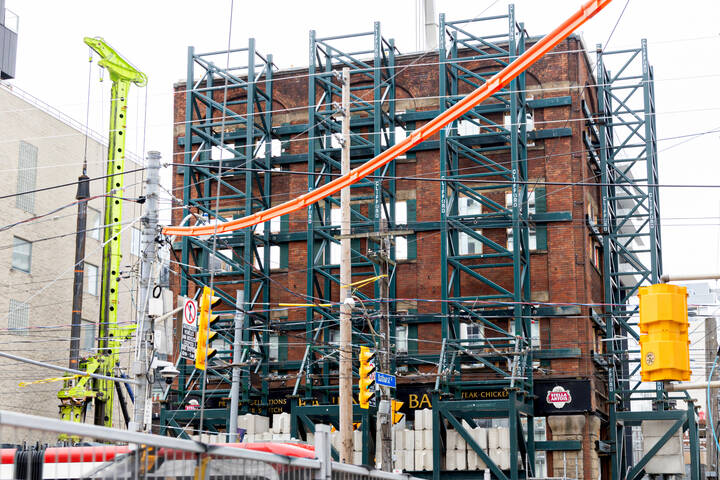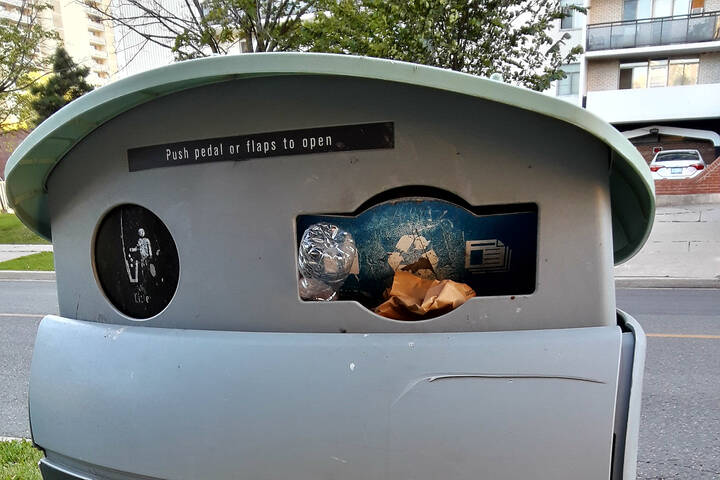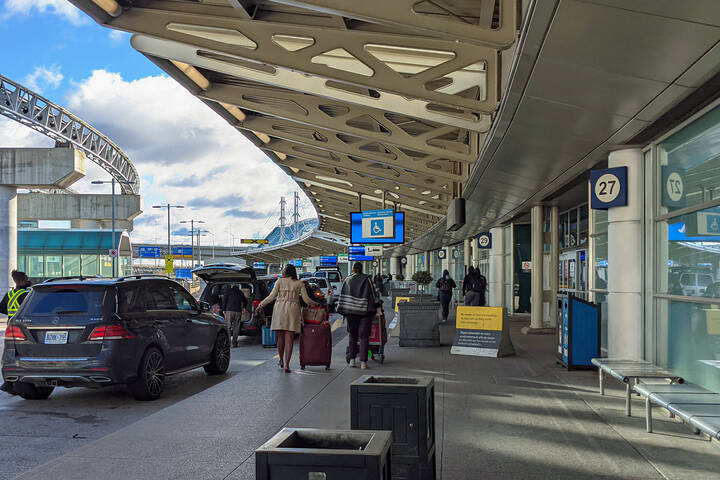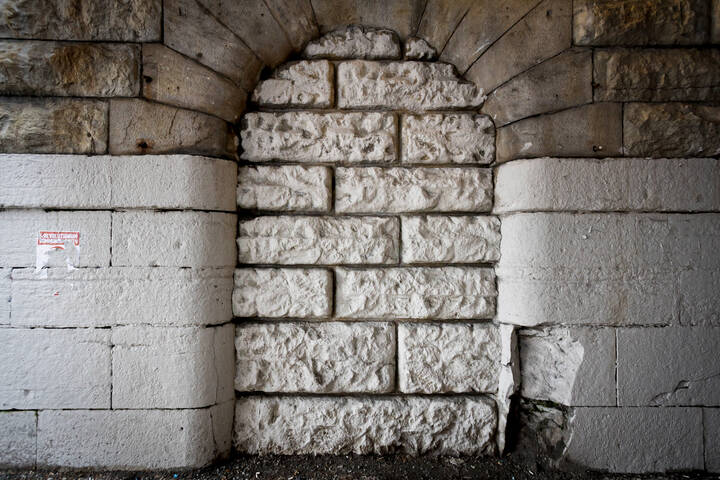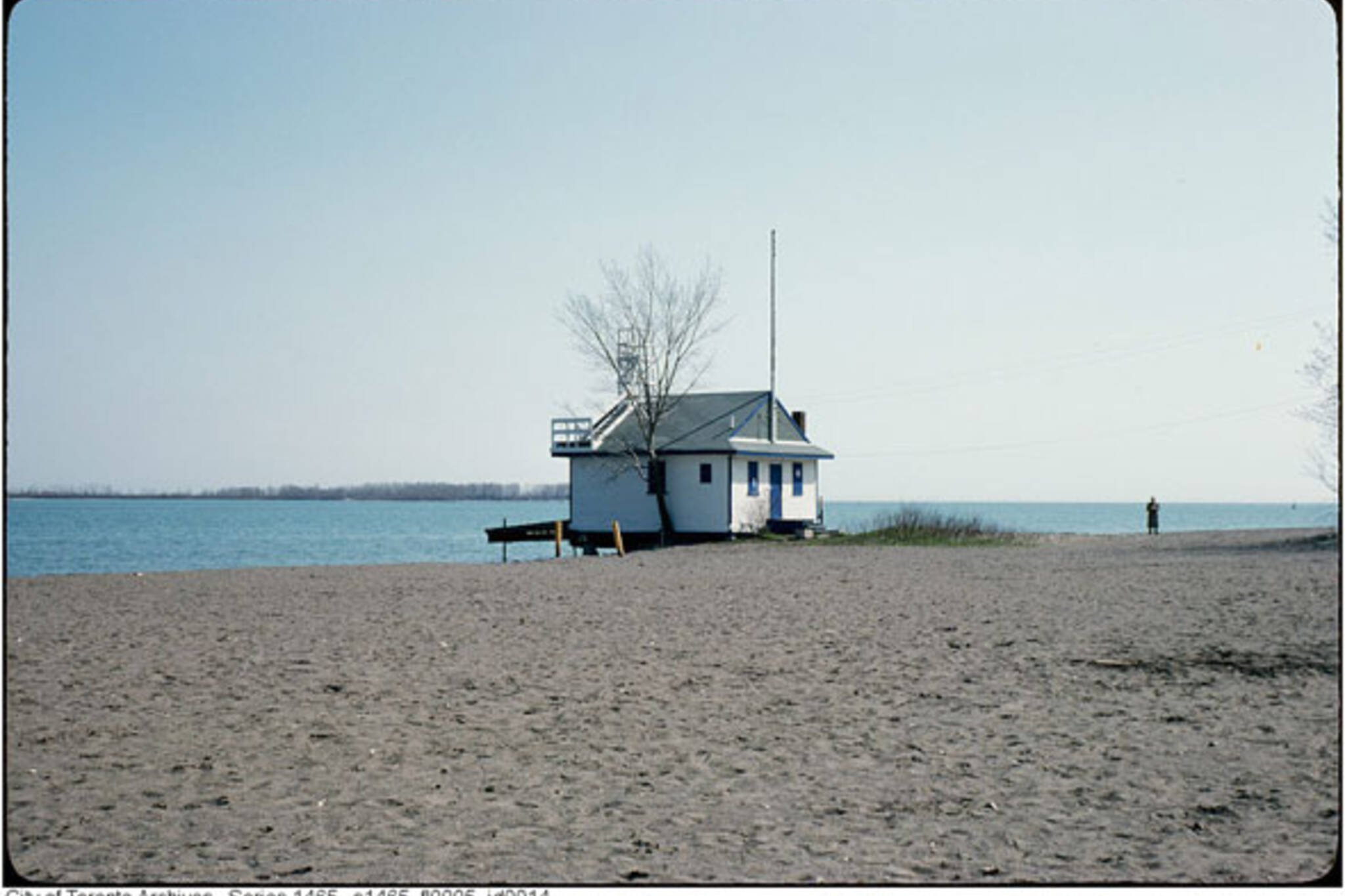
Sunday Supplement: Campaign donations, ideas for the Rocket, finding cobblestones, and Helicopter Canada
Electing our leaders isn't cheap. Organizing the ballots, advertising, and paying staff costs the city about seven million big ones, nine if you factor in the toll campaign rebates take on city coffers. There's a break down of how that scheme works below. Also this week, some improvement suggestions for the new subway trains, a story of cobblestones, and a look at Toronto from above in 1966.
I came across this week's lead image looking for bike path pictures for yesterday's history post. It's a well-photographed spot at Cherry Beach, but there's something hauntingly beautiful about the lone man standing in a knee-length winter jacket in the background, seemigly staring into the camera, not out into the lake. Unintentional art in the municipal archives.
ELECTIONS
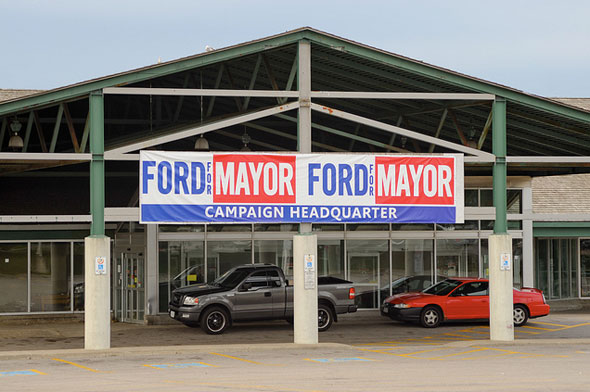
The approximate cost of finding a new mayor, if we actually have to, jumped to $9 million this week when city hall factored in the cost of campaign rebates it must pay to financial backers of candidates for council and mayor. Basically, individuals (corporations and unions are banned) can pay a maximum of $750 to a citizen running for council or $2,500 to a mayoral campaigner and receive up to $1,000 back after the election.
By comparison, 381 people gave the most amount possible to Rob Ford's election campaign in 2010, a total of $952,500, of which the city paid returned $381,000.
Contributions of between $25 and $300 attract a 75 per cent rebate while donors of up to $1000 get a flat $250 plus half of what ever amount was paid over $300. A similar flat fee and percentage is in place for checks over $1000.
Watch out though. No individual can donate more than $5,000 to multiple candidates without risking a fine of $25,000 and jail time. Election rules also state that individuals who pitch in more than $100 will have their name, address, and preferred candidate posted on the City of Toronto website.
At the last election the city paid out more than $2 million in campaign donation rebates.
ROCKET SUGGESTION BOX
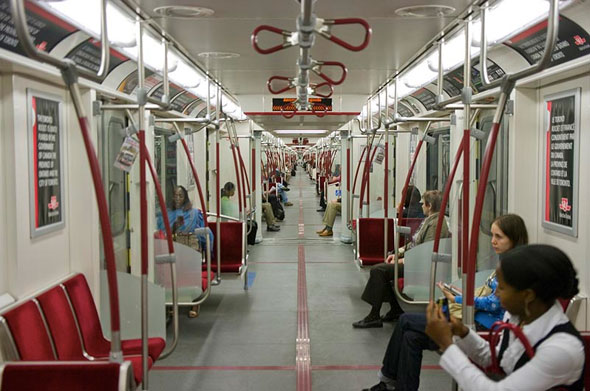
Earlier this week TTC CEO Andy Byford met with top brass from Bombardier to discuss problems with the doors of Toronto's new subway trains. The trouble stems from a useful design feature that prevents the train moving if one of the doors has failed to close.
Problem is, if the doors fail to close three times the train panics (or whatever the computerized version of that is) and shuts the whole system down, meaning the train has to be taken back to the yard and reset like an aged SNES with an iffy cart.
We asked what other issues the two groups might consider addressing while they discusses ways of fixing the current fleet and ensuring the trans currently in production don't suffer from the same issue. Here's a run down of your responses:
MORE POLES: The air conditioning units mounted in the roof of each car take up a substantial amount of headroom and block hand rails passing underneath. Most of the comments requested more places rails or straps for use during busy periods.
VOICE/GUIDANCE: The voice of the train, a robotic woman who tends to make grammatical errors and avoid the local vernacular, doesn't seem to be sitting well with riders. The timing of the door chimes and the illuminated system map's choice of colours were also a gripe.
DOORS: It's already being addressed, but several people expressed annoyance at the two-second pause at each station before the doors are released.
LIGHTS AND SQUEAKS: The lights inside the Rocket cars are significantly brighter than the H-series trains they replaced, and that's a shock for some. Squeaky pull down handles also rubbed someone the wrong way.
COBBLESTONES
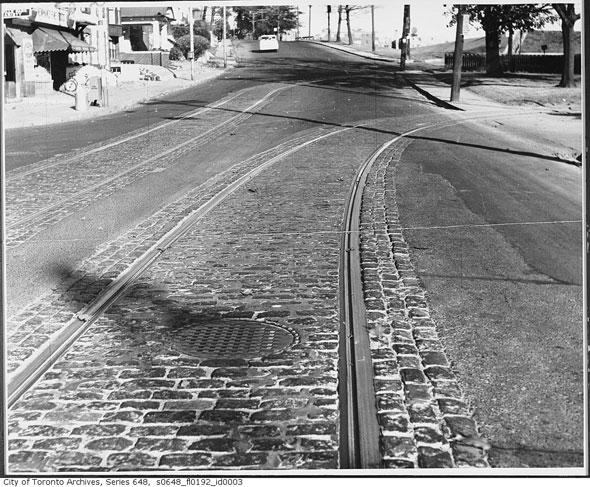
As archival pictures attest, the filler material between streetcar tracks in Toronto used to be assembled out of granite and limestone cobblestones before cheaper, pre-formed concrete slabs arrived.
These eight-inch stones, stockpiled in their thousands by the TTC after removal, were sold off in the 1960s for 10 cents a piece, less than the price of a subway token, as border stones for public parks, decorative features for private homes, and, surprisingly, the courtyard of a new library in Sault Ste. Marie. Washed stones were priced slightly higher at 12 cents.
It's likely some of these repurposed cobblestones that were originally shipped as ballast from Scotland or brought in from Gananoque near Kingston remain in parks and gardens around the city. Points for spotting one on your next trip to the park.
HELICOPTER CANADA
I'm slowly getting hooked on the National Film Board's online archive of films and this week I watched Helicopter Canada, a 1966 aerial tour of the country from Cape Spear to Vancouver Island (they didn't bother much with anything up north).
Apart from the occasional comical moment where the chopper buzzes a bewildered farmer or group of unsuspecting fishermen, the movie features some neat aerial shots of the Don Valley and an under-construction City Hall and Nathan Phillips Square. It starts around 19:50 if you want to skip the eastern provinces.
WHAT WE LEARNED THIS WEEK
- Greyhound Canada owns the rights to the London-Toronto bus route (they think) [The Star]
- Sometimes girl pandas look like boy pandas [The Star]
- Drivers do get ticketed for parking in the bike lane, and sometimes when they don't [The Star]
- Toronto's champion parking enforcement officer has issued almost $4 million in tickets [The Star]
Chris Bateman is a staff writer at blogTO. Follow him on Twitter at @chrisbateman.
Images: City of Toronto Archives, "Campaign Headquarter" by bigdaddyhame, "Long Train" by Stephen Gardiner from the blogTO Flickr pool.
Latest Videos
Latest Videos
Join the conversation Load comments

